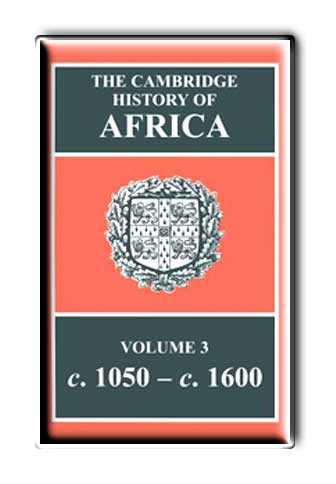The Cambridge History of Africa
Volume 3, From c.1050 to c.1600
Roland Oliver, ed. 1977. 20 maps, 816 pages

The Cambridge History of Africa
|
 |
The five and a half centuries described in this volume were those in which Iron Age cultures passed from their early and experimental phases into stages of maturity characterized by long-distance trade and complex, many-tiered political systems. In Egypt and North Africa it was a period of religious and cultural consolidation when the Arabic language and the faith of Islam were adopted by the majority of the indigenous Copts and Berbers. In the sub-Saharan Savanna it was a period rather of penetration when Muslim merchants and clerics built up small but significant minorities of Negro African converts. Muslim migrants conquered the Nilotic Sudan, encircled Christian Ethiopia and settled the coastline of eastern Africa. Intercontinental trade developed across the whole width of the Sahara and also toward the Indian Ocean ports. During the last century and a half of the period the Portuguese opened the Atlantic coasts and competed with the Muslim traders of the Indian Ocean. But throughout the period African states, large and small, were strong enough, relatively, to control their visitors from the outside world. The main significance of the outsiders, whether Muslim or Christian, was as literate observers of the African scene.